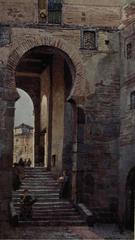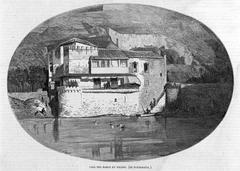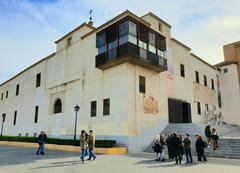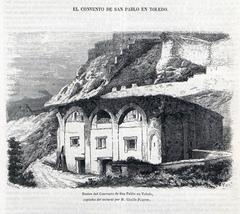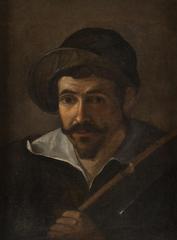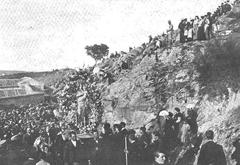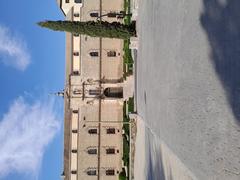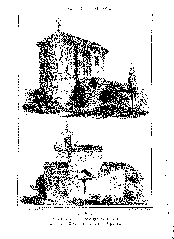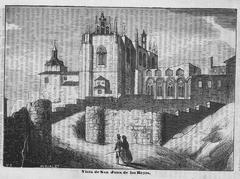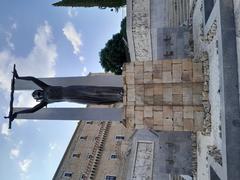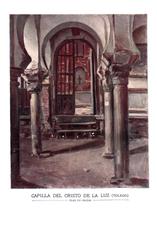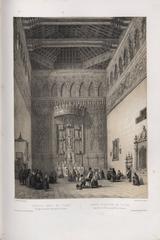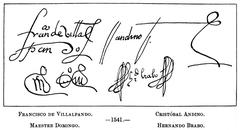
Oratorio de San Felipe de Neri, Toledo: Visiting Hours, Tickets, and Historical Information
Date: 04/07/2025
Introduction
Nestled in the heart of Toledo’s historic center, the Oratorio de San Felipe de Neri stands as a testament to the city’s enduring spiritual, architectural, and cultural heritage. This oratory, intimately connected to the Oratorian movement founded by St. Philip Neri in 16th-century Rome, reflects Toledo’s rich religious traditions and Baroque artistry, while also preserving significant Gothic elements and archaeological remnants from Roman times. Over the centuries, it has evolved from a sacred place of worship to a vibrant cultural venue, offering visitors an immersive journey through the layered history of Toledo.
The oratory’s central location in Plaza Amador de los Ríos places it within walking distance of landmarks such as the Toledo Cathedral and the Alcázar, making it an essential stop for those seeking to explore the multifaceted heritage of the city. Admission is free, with guided tours and cultural events regularly enriching the visitor experience. For detailed information, consult official sources such as Toledo Turismo, Consorcio de la Ciudad de Toledo, and GCatholic.org.
Table of Contents
- Historical Background
- Architectural Features
- Artistic Legacy and Restoration
- Archaeological Discoveries
- Cultural Role and Community Engagement
- Visiting Information
- Nearby Attractions
- FAQs
- Contact and Resources
- Conclusion and Recommendations
- References
Historical Background
The Oratorio de San Felipe de Neri traces its roots to the Oratorian movement of St. Philip Neri, whose 16th-century congregation promoted accessible worship and community involvement (GCatholic.org). The Toledo oratory emerged during the late Gothic and early Baroque periods, built on the site of the former parish church of San Juan Bautista—dating back to at least 1125 (Wikipedia - Spanish). After the main church was demolished in the late 18th century, the oratory survived as a cherished remnant of medieval and early modern Toledo.
The chapel, constructed at the end of the 15th or early 16th century, reflects the stylistic transition from late Gothic to early Renaissance in Castile (Wikipedia - English). Over time, the oratory has adapted to serve as both a place of spiritual reflection and a cultural venue, hosting exhibitions and concerts that connect the community to its artistic past and present.
Architectural Features
Exterior Highlights
The oratory presents a modest yet historically resonant stone-and-brick façade, typical of Toledan Baroque and late Gothic religious architecture. Its entrance is marked by a simple arched doorway, often framed by pilasters and topped with a classical pediment. Above, a niche may house a statue of St. Philip Neri, subtly signaling the oratory’s spiritual purpose. The façade’s restrained ornamentation and clean lines reflect the Counter-Reformation ideals of humility and piety, blending seamlessly into the surrounding medieval streetscape.
Windows are small and strategically placed to bring natural light into the interior, using clear or lightly tinted glass to create a contemplative atmosphere within.
Interior Details
Inside, the oratory’s elongated nave—typical of Oratorian design—fosters communal worship and intimacy. The barrel-vaulted ceiling, punctuated by supporting arches, draws the eye toward the main altar. Walls are finished in whitewashed plaster, adorned with pilasters, cornices, and subtle Baroque flourishes. The layout is intentionally simple, with pews facing a richly decorated altar that serves as the space’s focal point.
The main altar features a gilded or polychrome altarpiece, often depicting scenes from the life of St. Philip Neri, the Virgin Mary, and other saints. Frescoes or painted medallions on the ceiling illustrate virtues such as charity and humility, enhancing the spiritual ambiance.
A small choir loft at the rear, sometimes housing a compact organ, emphasizes the oratory’s tradition of sacred music. Flooring, typically of terracotta tiles or polished stone, and wooden furnishings complete the harmonious setting.
Artistic Legacy and Restoration
The oratory boasts a significant collection of Baroque and post-Gothic art, including sculptures, paintings, and intricate yesería (plasterwork). Notably, restoration efforts have uncovered original Gothic polychrome decorations, shedding light on the artistic transitions of Toledo’s past (Wikipedia - Spanish). The chapel was historically recognized as one of the city’s finest, commissioned by Don Sancho Sánchez de Toledo and celebrated in historical chronicles (Wikipedia - English).
Today, the oratory also serves as a venue for contemporary art, notably textile and women’s art exhibitions, bridging past and present (Historias de Toledo).
Archaeological Discoveries
Beneath the oratory, significant Roman thermal baths (termas romanas) have been uncovered, adding an archaeological dimension to the site (Toledo Turismo). Visitors can view these remains, accompanied by informative panels that contextualize the oratory within Toledo’s ancient layers. A replica of the “Sátiro Danzante de Toledo,” a Roman sculpture, is also on display, further connecting the site to the city’s deep historical roots (Consorcio de la Ciudad de Toledo).
Cultural Role and Community Engagement
Throughout its history, the oratory has hosted spiritual gatherings, sacred music performances, and charitable activities. Linked to the “Escuela de Cristo” confraternity, it has long served as a hub for religious and community life. The annual feast of St. Philip Neri on May 26 is celebrated with special liturgies and cultural events.
In recent years, the oratory has become a dynamic cultural space, managed by the Consorcio de la Ciudad de Toledo. It hosts rotating art exhibitions, concerts, workshops, and lectures, emphasizing the work of women artists and promoting textile arts (Historias de Toledo).
Visiting Information
Hours and Admission
- Opening Hours: Tuesday to Sunday, 10:00 AM to 6:00 PM. Closed Mondays and major public holidays. Seasonal adjustments may occur; check the official site or local tourist offices before visiting.
- Admission: Free of charge. Donations are welcome to support ongoing maintenance and programming.
Accessibility and Facilities
The oratory is wheelchair accessible, with ramps and adapted facilities for visitors with reduced mobility. Restrooms and seating are available, and service animals are generally permitted with prior confirmation. Some areas, like the choir loft, may remain inaccessible due to historical constraints.
Guided Tours and Special Events
Guided tours—available in Spanish and occasionally in English—offer in-depth exploration of the oratory’s history, art, and archaeological features. It is advisable to book in advance for group visits or to arrange tours in specific languages (Toledo Guia Turistica y Cultural).
The oratory regularly hosts special events, including art exhibitions, classical concerts, and lectures. Event schedules are available on the Toledo cultural agenda.
Visitor Tips and Etiquette
- Dress modestly, especially during events or religious celebrations.
- Photography is allowed for personal use without flash or tripods; always check posted guidelines.
- Food and drinks are not permitted inside.
- Maintain a respectful, quiet atmosphere.
Nearby Attractions
The oratory’s central location makes it easy to combine with visits to other Toledo highlights, including:
- Toledo Cathedral: A Gothic masterpiece.
- Alcázar of Toledo: Iconic fortress and museum.
- Jewish Quarter: With its historic synagogues and museums.
- Roman Baths, Cuevas de Hércules, Convento de Santo Domingo “El Antiguo” (Toledo Turismo).
Cafés, restaurants, and shops are plentiful in the vicinity, offering local cuisine and souvenirs.
FAQs
Q: What are the opening hours of the Oratorio de San Felipe de Neri?
A: Tuesday to Sunday, 10:00 AM to 6:00 PM. Closed Mondays and holidays.
Q: Is there an admission fee?
A: No, entry is free.
Q: Is the oratory accessible for visitors with disabilities?
A: Yes, there is wheelchair access and adapted facilities.
Q: Can I take photos inside?
A: Yes, for personal use and without flash or tripods.
Q: Are guided tours available?
A: Yes, guided tours are regularly offered; advance booking is recommended.
Q: How do I get there from the train station?
A: The oratory is a 15-minute walk or a short taxi ride from Toledo’s main train station.
Contact and Resources
- Address: Plaza de Amador de los Ríos, 6, 45001 Toledo, Spain
- Telephone: +34 925 25 30 80
- Official Website: toledoguiaturisticaycultural.com
- Tourist Information Email: [email protected]
For the latest updates, events, and visitor support, consult the official Toledo Turismo and Consorcio de la Ciudad de Toledo websites.
Conclusion and Recommendations
The Oratorio de San Felipe de Neri is a vibrant intersection of Toledo’s history, architecture, and contemporary culture. Its layered narrative—from Roman times through medieval piety to modern artistic programming—makes it a singular destination for travelers seeking depth and authenticity.
To maximize your visit:
- Arrive during quieter hours (morning or evening).
- Explore nearby historical sites for a broader Toledo experience.
- Check the cultural agenda for special exhibitions and concerts.
- Take advantage of guided tours for deeper insights.
For an enriched and interactive visit, download the Audiala app for guided audio tours and follow official channels for real-time updates on exhibitions and events.
References
- Oratorio de San Felipe de Neri (Toledo) - Wikipedia, 2024
- Oratorio de San Felipe de Neri, Toledo - Trek.zone, 2024
- Oratorio de San Felipe de Neri - Consorcio de la Ciudad de Toledo, 2024
- Oratorio de San Felipe de Neri - Toledo Turismo, 2024
- Oratories of Saint Philip Neri - GCatholic.org, 2024
- Oratorio de San Felipe Neri (Cádiz) - Andalucia.com, 2024
- Termas del Oratorio de San Felipe Neri - Toledo Guia Turistica y Cultural, 2024
- Descubriendo Toledo: Oratorio de San Felipe Neri - Historias de Toledo, 2024

